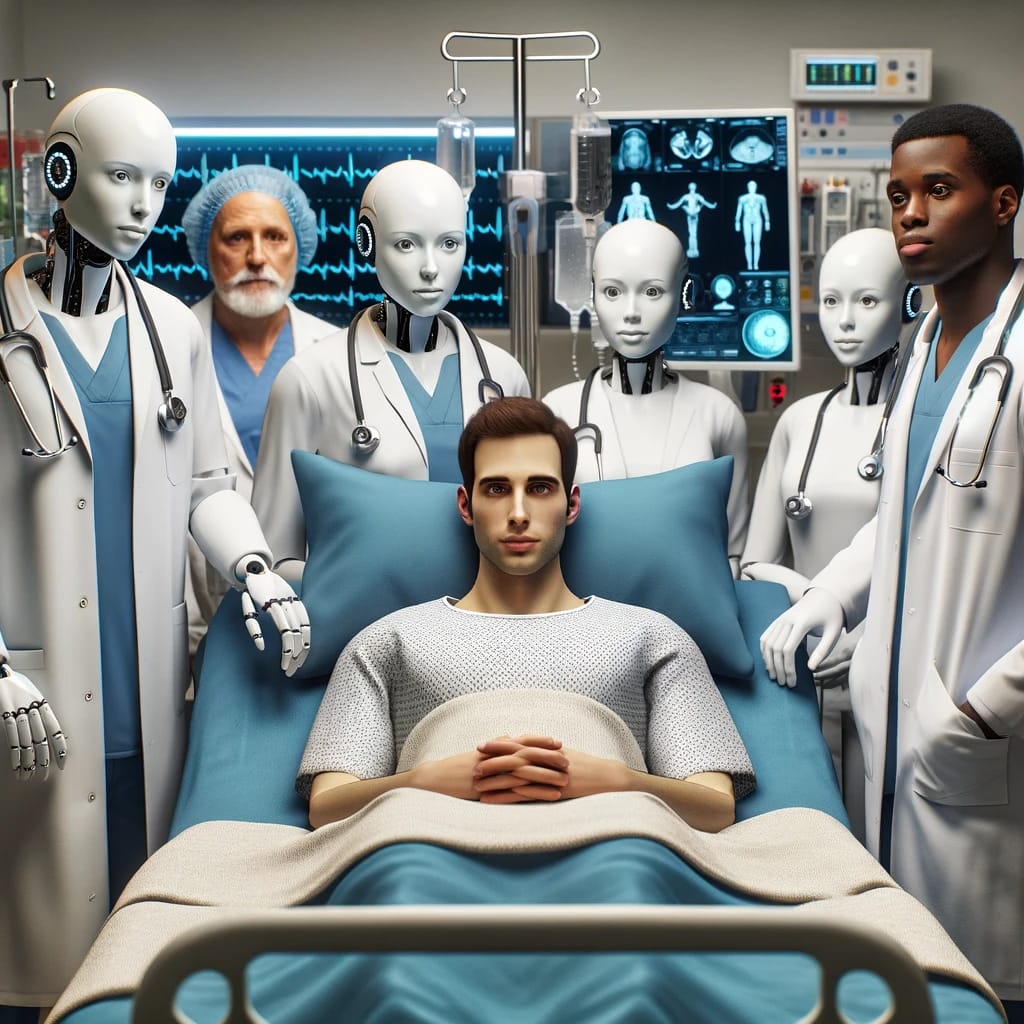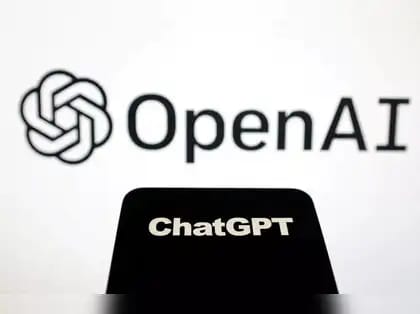The application of artificial intelligence (AI) in healthcare has been growing steadily over the past few years. This is primarily due to the availability of large amounts of healthcare data as well as the dramatic increase in computational power. Today, AI-based algorithms have been developed for a wide range of applications, from predicting patient outcomes to optimizing clinical workflows. Given the current pace of innovation, AI is bound to play a vital role in healthcare in the years to come.
Almost every major industry has seen significant advancements with the aid of artificial intelligence (AI) in the past decade, and the healthcare industry has not been an exception. The most recent examples of AI in medicine have shown promise in a wide range of areas, from radio-diagnostics to cancer therapy. With a flood of interest and investments, AI is set to disrupt traditional healthcare in ways that were not thought possible even a few years ago.
In this article, we have explored some examples of how AI has been used to improve patient care, with a particular emphasis on the inpatient setting. We have also reviewed basic concepts and terminology in the field of Artificial Intelligence (AI) to better understand the examples cited.
Artificial Intelligence (AI) is a broad term for general intelligent computing capable of mimicking human intelligence; it includes machine learning (ML) and deep learning. At a high level, ML involves processing data to infer patterns that are then applied to predictive decisions using predictive models. In essence, it is a way for computers to learn from examples and draw conclusions, much like humans learn from their surroundings. Deep learning involves applying artificial neural networks (ANNs) – i.e., multi-layered abstract computational functions loosely modeled after neuronal connections in the brain. Deep learning allows for the discovery of incredibly complex and abstract patterns, enabling breakthrough performance and accuracy in speech recognition, natural language processing (NLP), computer vision, and beyond.
Artificial Intelligence (AI) is not a new concept; however, its recent widespread adoption is due to the availability of large amounts of data as well as the dramatic increase in computational power. We accumulate exabytes (one billion gigabytes) of healthcare data each year, and this number is expected to grow 10-fold by 2020. There are many reasons for this significant increase in data volume, but it is primarily driven by the widespread implementation of electronic health records (EHRs). Encouraged by the HITECH portion of the 2009 Recovery Act, EHR adoption in the US has now exceeded ninety percent. Instead of feeling empowered by ever-growing patient data, we often find ourselves feeling overwhelmed. Artificial Intelligence (AI) can help make sense of this information, by finding patterns that elude human intelligence. To help understand its potential applications we have broken down hospital admissions to see how AI can help patients in care at every step of the journey, from admission to discharge.
At The Time Of Admission
Depending on the complexity of the case, being admitted to the inpatient service can be a time-consuming process. One of the most cumbersome steps is obtaining relevant and up-to-date medical information about the patient. This often involves sorting through volumes of electronic records and also involves reviewing clinical notes, most of which are in free-text or unstructured format.
Artificial Intelligence (AI) can offer a great solution to this with the help of the development of natural language processing (NLP) tools. These systems work by analyzing sequences of text within the EHR to derive meaningful contextual relationships between them. In essence they “read” the EHR looking for clinically relevant data points. These tools have been used to analyze clinical notes and extract risk factors, disease characteristics, and relevant drug therapies for a number of chronic diseases. NLP-based tools can potentially scrape multiple electronic records in minutes and organize the most valuable data for the current admission. Everything from documented comorbidities and relevant outpatient workups to the latest medication lists can be easily compiled and made available to the admitting team. NLP helps us unlock the full potential of EHR data by converting clinical text into structured data, which can be used to guide clinical decisions.
On The Medical Floor
The real value of an AI-based system will come from real-time analysis of patient data resulting in actionable insights. After being trained on multiple patient data sets, these systems have shown promise in reliably predicting adverse outcomes before they become clinically evident. A clear example of this comes from the septic shock prediction tool developed by Saria and his colleagues at Johns Hopkins University. TREWS, or Targeted Real-Time Early Warning Score, was developed to identify patients at highest risk of developing septic shock and subsequent organ failure. Using a form of machine learning called “supervised learning,” they trained the model using data from over thirteen thousand critical care patients. The training dataset included routinely collected measurements such as age, vital signs, laboratory test results, and clinical history. The validated score was able to identify patients who would develop septic shock with an area under the receiver operating characteristic curve (AUROC) of 0.83. Moreover, it was able to identify the said patients an average of 28 hours before the onset of shock and before any evidence of sepsis-related organ dysfunction in two-thirds of those cases. In a situation where every hourly delay in antibiotics can lead to increased mortality, such tools can significantly impact outcomes.
Even in less acute situations, it is important to identify patients who are less likely to respond to treatment and who require more resource utilization. Rajkomar et al used deep learning neural networks to reliably predict acute medical events by analyzing raw EHR data. The data set included: patient demographics, provider orders, diagnoses, procedures, medications, lab values, vital signs, flow sheet data, and even free text clinical notes. Using data from over two lakh hospitalised patients, they developed a model that was able to predict the probability of in-hospital mortality (AUROC 0.93), prolonged length of stay (AUROC 0.75), and even the final discharge diagnosis of patients (AUROC 0.75; frequency-weighted AUROC 0.90) outperforming the traditionally used models in all cases. Moreover, with regard to outcomes such as in-hospital mortality, the deep learning models were able to make reliable predictions 24-48 hours earlier than traditional methods.
After Discharge
Identifying patients at greatest risk of readmission has been a priority area in our efforts to cut healthcare costs. However, most of our current readmission risk prediction models perform quite poorly and thus have limited utility. This is likely due to the limited number of data points that were considered when developing these models. As an extension of the study mentioned above, Rajkomar and colleagues were able to reliably predict unplanned readmissions with an AUROC of 0.75-0.76, yet outperforming traditional models.
Similar success has also been observed with chronic conditions such as heart failure. Using a form of deep learning called Unified Deep Networks (UDNs), Golas et al developed a heart failure readmission prediction model that was able to reliably predict 30-day unplanned readmissions with an AUROC of 0.70. Such predictive tools would allow healthcare providers to identify high-risk groups and target them for early intervention.
Debate
Although there is no denying that AI will play a huge role in shaping the future of health care, there is also reason to be cautious in these early stages. A recent study looking at the quality and safety of AI applications in health care noted some potential areas of concern with existing models. It is important to remember that a generated algorithm is only as good as the data it was trained on. Poor quality of training data will always result in inaccurate predictions. Furthermore, when real-world and training data differ, this can lead algorithms to draw incorrect conclusions, a phenomenon known as “over-fitting.” Another concern is the increasing reliance on machine-generated suggestions. As the acceptance of Artificial Intelligence (AI) continues to grow, there may be a tendency for health care professionals to become complacent and “blindly trust” computer-generated assessments, and in doing so, may lead to impaired clinical judgment.
The true promise of AI is to assist physicians, not replace them. By automating unnecessary activities and assisting in clinical decision-making, the hope is to make healthcare professionals more efficient and improve patient outcomes. The first step toward accepting these new technologies comes from better understanding them and recognizing their benefits while keeping their limitations in mind.
Read Also:
- Advantages And Disadvantages Of The Use Of Artificial Intelligence (AI) In Management
- Artificial Intelligence (AI) Applications In Medicine
- Artificial Intelligence (AI) In Diagnosis And Treatment
- Findings And Discussions On Artificial Intelligence (AI) In Healthcare
- Artificial Intelligence (AI) Applications In Medicine







